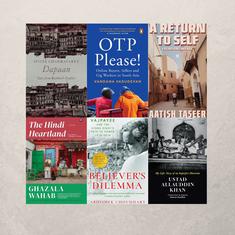When informed by a colleague-painter that his one-time mentor, Camille Pissarro, had finally discovered his artistic voice, Paul Cezanne rolled his eyes dramatically and exclaimed: “Thank god I still haven’t found mine.” And the fact that he hadn’t continued to stimulate an intensely creative evolution in his oeuvre till the end of his days.
Such a ceaseless, dissatisfied search for the unfamiliar within oneself is a rarity among contemporary creative artists, especially authors. Which makes Kunal Basu somewhat of an outlier. During a recent interaction, the writer spoke about his obsession with the act of searching, which has remained with him throughout his literary career, a search for the perfect tone in a novel, the perfect form of narrative, the perfect configuration of characters. In his latest novel, Sarojini’s Mother, the motif of the eternal seeks shifts from the penumbra of a preoccupation to assume its rightful position centre-stage as the principal subject.
The quest
The facts of the plot are engrossing in themselves. Sarojini (Saz) Campbell, born in Calcutta, adopted while still an infant, in the aftermath of a communal riot and taken to England by Lucy Campbell, a young hippie woman, journeys back to the city of her birth, twenty-seven years later, to search for her biological mother. Since the papers related to her birth and adoption, which were in a shoebox, are now irrevocably lost, she has virtually no leads with which to begin her mission.
But then, by a stroke of luck, she meets Chiru Sen, an Elvis lookalike who prefers to be addressed as such, a guide and friend of hapless foreigners who visit the metropolis. Assisted by the colourful members of Elvis’s music band and friends, including an ex-convict and an ace racecourse bookie, the unlikely duo commences its search. Soon, this leads Saz and Elvis to a squalid shanty town, where Jamuna, a housemaid with a chequered past, emerges as the likely candidate for being the mother.
But just as Saz begins to acclimatise herself to the routine of slum life, a second candidate, Urvasi, inhabiting the opposite end of the socio-economic spectrum, appears in her life. Which then sets off the narrative on a roller-coaster ride of dramatic twists and turns, so that this work of literary fiction can also be read straight through as a sort of disquieting thriller.
Light and shadows
Beneath all this outward spectacle, though, one senses several other aspects at play. First, the novel comes across as an exploration of the varied nuances of motherhood. Basu peels away the notion of unquestioning love between mother and child to expose the uneasy dynamics and manipulations that inevitably form part of such a complex relationship.
Love, in this book, alternates between bursts of baroque light and veiled shadows, the effusive, almost operatic attentions of Urvashi and Jamuna, and as its counterpoint – the incipient, understated feelings forming between Saz and Elvis. Also, it’s no coincidence that Urvashi and Jamuna hail respectively from the top and bottom strata of the social pyramid.
In the same vein as Basu’s previous novel, Kalkatta, in which the dark obverse of the glitzy, sequined side of the city was unravelled, the characterisation of these two “mother candidates” becomes a study in contrast, of two mutually exclusive Indias, the elite and the dispossessed, the world of chic cafes and the Governor’s Club juxtaposed against the frugal meals and reeking, open latrines of the slum.
Likewise, the locale of the novel, Calcutta, seems to have been chosen with deliberate intent. According to Basu, “the city is full of strange people”, and perhaps this is what gives him the boon of a full chromatic range to execute a number of eclectic character sketches. Kallu, Jamuna’s elder son, a hardened criminal who’d willingly work against his own mother’s interests, so long as it profited him; Monty, Urvasi’s paramour, a highly successful Supreme Court lawyer and a seasoned golfer, yet harbouring his own insidious agenda; and Sulaiman, the shrewd racecourse bookie who can spot the pedigree of a horse at the merest glance, and yet is in possession of a level of prudence worthy of the legendary Solomon himself, in the Old Testament.
The city as a character
The sights, smells and sounds of the city constitute a secondary line of dramatis personae all by themselves. A sun streaking out of the clouds blinds the duo on its epic ride in the No. 36 tram, a stiff breeze scatters Saz’s words into the ether, and a crescent moon can still accord that rare moment of companionable silence in an otherwise dreary situation. Even the forbiddingly repellant alliterations describing purlieu of the city’s underbelly – “dark, dirty, dingy, dangerous” – can hold a sense of allure to an outsider like Saz.
But as the novel rushes towards its denouement, finally it is the turn of the gravestones of the European cemetery, weather-worn and unsung, to take charge, conspiring to turn Calcutta into a city of loss. And so Chiru Sen, the Elvis of Calcutta, the narrator, ends his tale in much the same mood that one of Elvis Presley’s first hits, Heartbreak Hotel, begins. But even now, infused into all this pain is a certain bleak symmetry and the notion that the human condition, no matter how dark its attendant travails, is not inconsolable.

Sarojini’s Mother, Kunal Basu, Penguin Viking.










